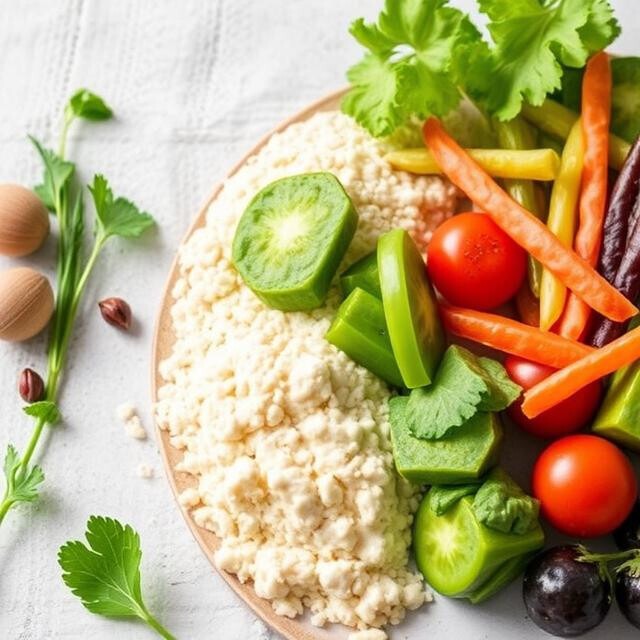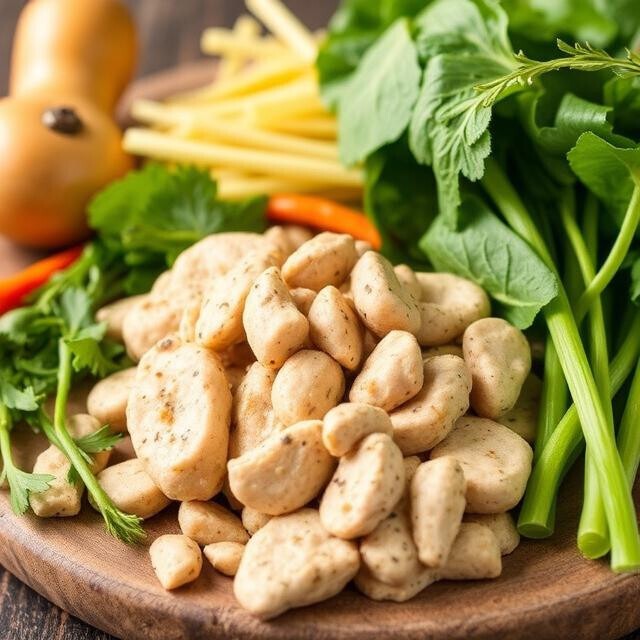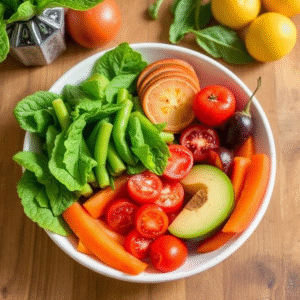
Becoming vegetarian doesn’t mean missing out on your protein intake. All you need is knowledge of the vegetarian protein sources. Protein sources made from natural products, full of essential vitamins and minerals and of course protein.
Going vegetarian doesn’t mean compromising on protein. In fact, one of the biggest misconceptions about a vegetarian diet is that it lacks sufficient protein, nothing could be further from the truth.
You might be wondering how to keep up your protein intake, but trust me, it’s not as tough as it sounds. Once you get the hang of the right foods, you’re all set. This is just the beginning!
The Vegetarian Protein Sources
Plant-based proteins come with a bunch of benefits. They’re usually lower in saturated fats, high in fibre, and packed with essential nutrients that support heart health, digestion, and overall well-being. Plus, incorporating a variety of plant-based protein sources can lead to a more balanced and nutrient-rich diet overall.
Did you know? The average adult needs about 50 grams of protein per day, depending on factors like age, activity level, and health goals. With the right mix of plant-based foods, meeting this target is easier than you think!

Creating a well-rounded vegetarian diet is all about mixing and matching the right foods. Think legumes, nuts, seeds, whole grains, and even vegetables that pack a protein punch. With a little planning, you can easily meet your daily protein needs while keeping your meals exciting and satisfying.
Top Vegetarian Protein Sources and Their Benefits
Legumes – The Plant-Powered Protein Champions
Legumes, including lentils, chickpeas, and beans, are among the best vegetarian protein sources. They’re affordable, versatile, and loaded with nutrients like iron and fibre. Whether blended into a creamy hummus, tossed into salads, or simmered in a warming stew, legumes are a must-have for any vegetarian diet.
Protein Power per Cup (Cooked):
- Lentils – 18g
- Chickpeas – 15g
- Black Beans – 15g
Pro tip: Pair legumes with whole grains like brown rice or quinoa to get a complete protein profile.
The Vegetarian Protein Sources: Tofu and Tempeh – Versatile and Satisfying
Tofu and tempeh, both derived from soybeans, are excellent high-protein meat alternatives. Tofu’s mild flavour allows it to soak up marinades beautifully, making it ideal for stir-fries, curries, or even grilling. Tempeh, on the other hand, has a firmer texture and a nutty taste, making it perfect for sandwiches, wraps, and stir-fries.
Protein Power per 100g:
- Firm Tofu – 10g
- Tempeh – 19g
Fun fact: Tempeh undergoes fermentation, making it easier to digest and beneficial for gut health.
Quinoa – The Super grain with Complete Protein
Quinoa is one of the few plant-based foods that contain all nine essential amino acids, making it a complete protein. This gluten-free grain is perfect as a base for bowls, in salads, or even as a warm breakfast porridge.
Protein Power per Cup (Cooked):
- Quinoa – 8g
Bonus: It’s also packed with fibre, magnesium, and iron, making it a nutritional powerhouse.
Nutritional Yeast – The Cheesy, Protein-Packed Sprinkle
Nutritional yeast is a hidden gem in vegetarian diets. Not only does it add a deliciously cheesy, umami flavour to dishes, but it’s also packed with protein and B-vitamins, including B12 (which can be tricky to get on a plant-based diet).
Protein Power per 2 Tablespoons:
- Nutritional Yeast – 8g
How to use it: Sprinkle it over popcorn, mix it into pasta sauces, or blend it into dressings for a nutrient boost.
Oats – A Breakfast Staple with Hidden Protein
Oats aren’t just a great source of fibre; they also contain a decent amount of protein. Whether in oatmeal, smoothies, or baked goods, they make for a hearty, energizing start to the day.
Protein Power per Cup (Cooked):
- Oats – 6g
Enhance your oatmeal: Add chia seeds, peanut butter, or hemp seeds for an extra protein kick.
The Vegetarian Protein Sources: Nuts and Seeds – Small But Mighty Protein Sources
Nuts and seeds may be tiny, but they’re nutrient-dense and rich in protein, healthy fats, and antioxidants. Almonds, chia seeds, hemp seeds, and pumpkin seeds are particularly protein-rich.
Protein Power per 2 Tablespoons:
- Almonds – 6g
- Chia Seeds – 4g
- Hemp Seeds – 6g
- Pumpkin Seeds – 5g
Easy ways to include them: Sprinkle over salads, blend into smoothies, or mix into yogurt.

The Vegetarian Protein Sources: A Sample High-Protein Vegetarian Meal Plan
Breakfast:
- Overnight oats with chia seeds, almond butter, and sliced bananas
- Protein smoothie with spinach, hemp seeds, and plant-based protein powder
Lunch:
- Quinoa and black bean salad with avocado and lime dressing
- Tofu stir-fry with mixed veggies and brown rice
Dinner:
- Lentil soup with whole-grain bread
- Tempeh and roasted vegetable tacos with a side of guacamole
Snacks:
- Handful of almonds and pumpkin seeds
- Roasted chickpeas with sea salt and cumin
- Nutritional yeast popcorn
Final Thoughts – The Vegetarian Protein Sources
There’s so many delicious and diverse vegetarian protein sources available, meeting your daily protein needs is easier than ever. From fibre-rich legumes to nutty quinoa and creamy tofu, the key is to embrace variety and balance in your meals.
Quick Protein Hack: Swap white rice for quinoa to increase protein by over 100% in your meals!
Whether you’re experimenting with new ingredients, planning high-protein meals, or simply looking for tasty ways to eat more plant-based foods, there’s no shortage of options. So, get creative in the kitchen and enjoy the many benefits of a protein-rich vegetarian lifestyle!
What’s your favourite high-protein vegetarian meal? Share your thoughts in the comments below!
Ultimate Training Gear.






